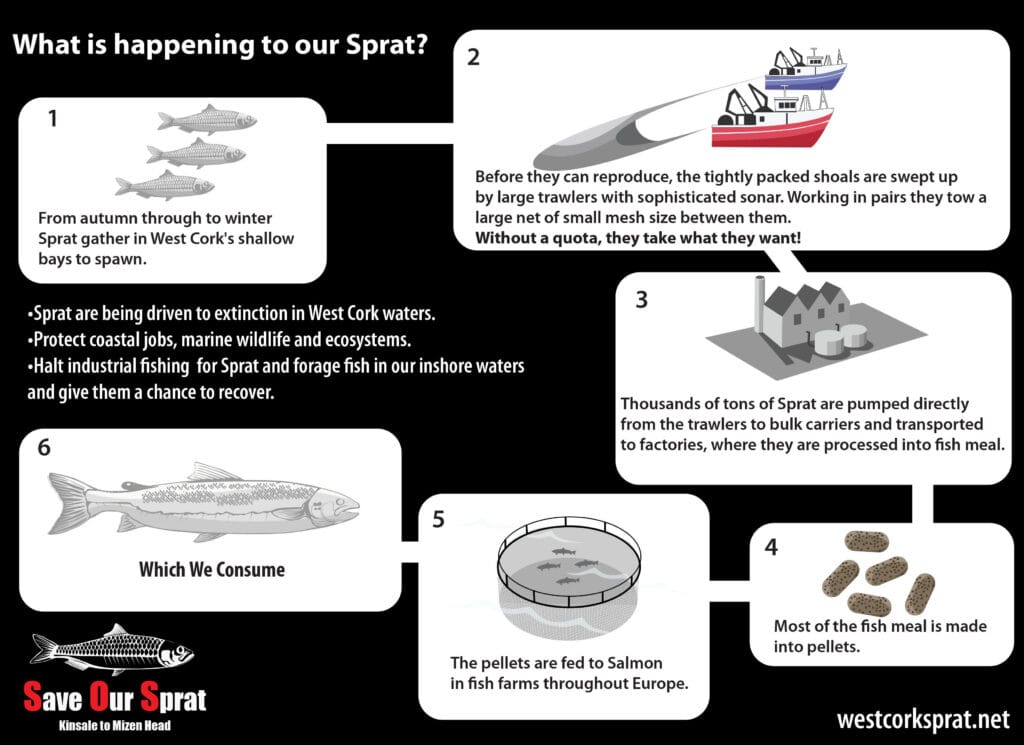What is pair trawling, and how is it decimating Irish Sprat stocks?
Pair trawling is an industrial fishing method where two vessels tow a large, shared net between them. This technique is highly efficient and is often used to target small pelagic fish like sprat, which form dense shoals near the surface or midwater column, especially during their inshore spawning season in autumn and winter.
On Ireland’s south coast — particularly in West Cork’s inshore waters — pair trawling has been used intensively over more than a decade to harvest sprat. While technically legal, this method poses serious ecological concerns due to its non-selective nature and high catch volumes at a pivotal point in the fish life cycle.

Sprat is a keystone forage species, forming the base of the marine food web. It plays a vital role in sustaining a wide array of marine life, including commercial fish species (like cod, hake, and pollock), seabirds, and marine mammals such as dolphins, porpoises, and whales. When industrial trawlers remove large quantities of sprat from the ecosystem — particularly during their inshore spawning aggregations — it disrupts this delicate balance.
Over the last decade, communities along the south coast have reported dramatic declines in marine biodiversity. The reduction in common dolphins, whales, and seabird activity correlates closely with the intensification of pair trawling for sprat. With no catch quotas or robust ecosystem-based management in place, sprat stocks are being systematically depleted, undermining the long-term health of the marine environment and the coastal communities that depend on it — including tourism, fishing, and nature-based enterprises.
Many conservationists, scientists, and coastal stakeholders are now calling for an immediate moratorium on inshore sprat fishing and a move toward a more precautionary, ecosystem-based approach to fisheries management.
